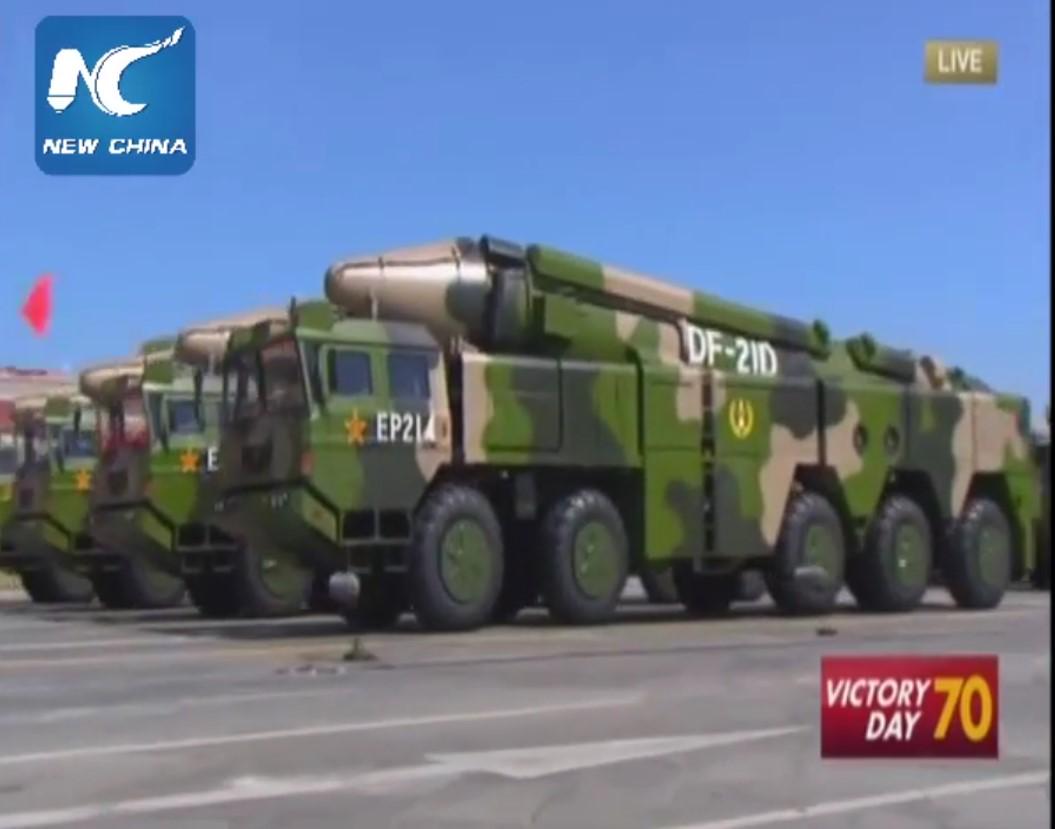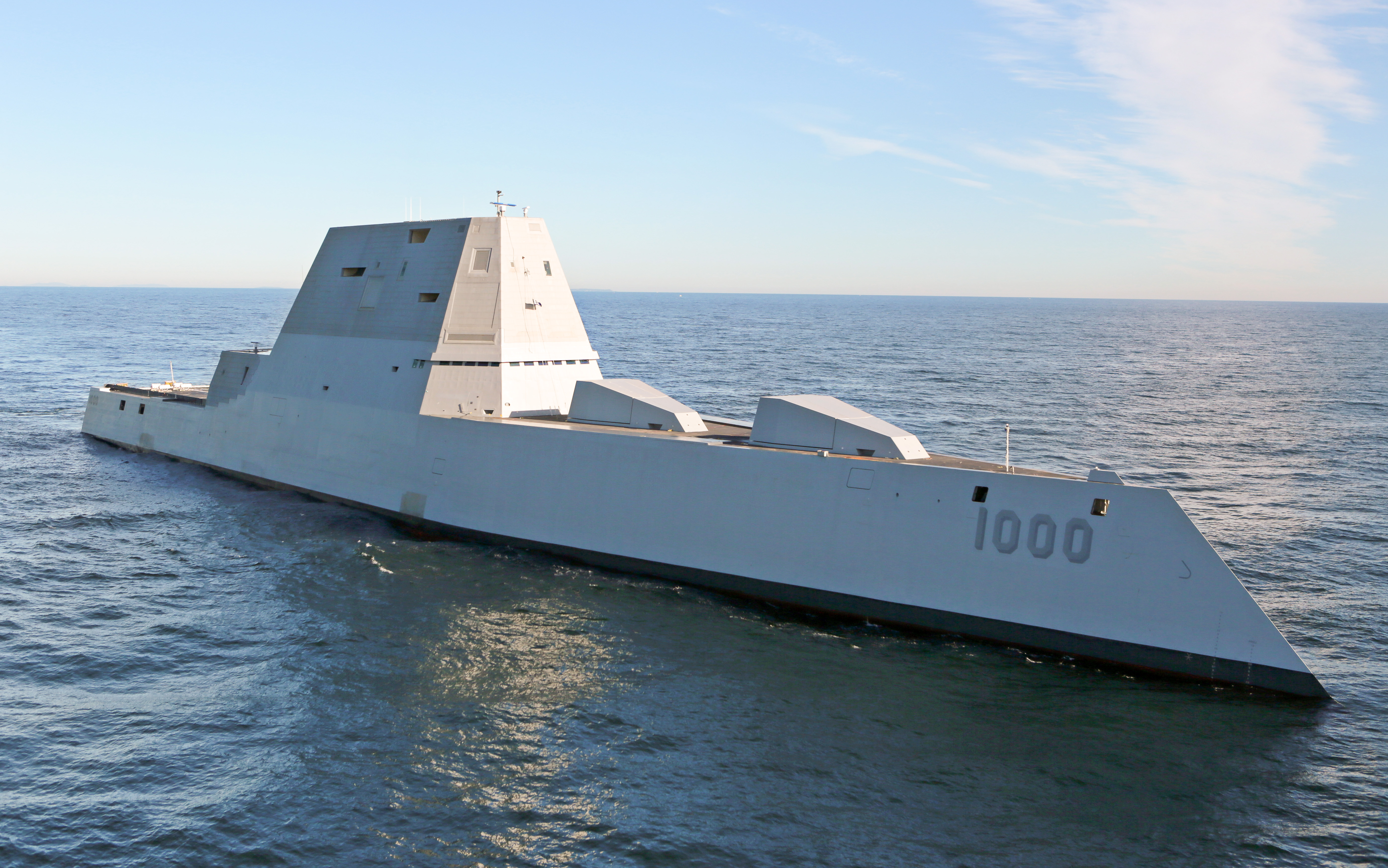With China and Russia having blindsided the US with radical new long-range ballistic and hypersonic missiles that threaten its conventional maritime edge and large aircraft carriers, Washington has introduced a slew of new military concepts to make up for the perceived loss.
-
World’s Two Heavy-Duty Fighter Jets – Su-30MKI & F-15 Eagle Prepare For ‘Aerial Faceoff’ Later This Year
-
Gone ‘Berserk’ In 2016, US Navy Awards Lockheed Martin Contract To Produce Trident II Sub-Launched Ballistic Missiles
The Western Pacific and the South China Sea together may be seen as a theater of a likely conventional war between the US and China, where the US faces a clear technological, doctrinal, and logistical disadvantage.
The EurAsian Times had reported on China’s ‘home advantage’ (and consequently the US’ ‘away disadvantage’) that would create logistical nightmares for sustaining high-intensity combat without having basing rights with countries.
China also has missiles that outrage US systems of the class, that can keep American warships and aircraft carriers at a distance, preventing them from ever getting close.
China’s Deadly Missile Arsenal
The YJ-18 and YJ-12 supersonic anti-ship cruise missiles (range 540 km) and the PL-15 beyond visual range air-to-air missile (300 km), outrange the US’ subsonic 240-km range Harpoons and the 161-km AIM 190D.
China’s 1,500 km range DF-21D Anti-Ship Ballistic Missile (or the ‘carrier killer’) that threatens US aircraft carriers follows a ballistic trajectory like a strategic nuclear missile, leaves the atmosphere, and re-enters it to release a re-entry vehicle that propels down to hit an aircraft carrier.

Some of the solutions being considered were the ‘Lightning Carrier’ concept where smaller carriers with F-35 Lightning II stealth strike aircraft would undertake land and maritime attack missions.
While cutting down the number of costly carriers from 11 to 9 was one concern, the realization stemmed from the Gerald R. Ford-class ships that were not only found to be quite futile in a hotly contested environment like Western Pacific but have been riddled with a series of problems as well. The Future Carrier 2030 study was one such exercise.
Another one was a US Marine Corps (USMC) concept called the Force Design 2030 doctrine, which involved basing small, mobile Marines on islands controlled by nations friendly to the US and undertaking ‘Long Range Fires’ on Chinese naval shipping. However, the Philippines had threatened to terminate the Visiting Forces Agreement (VFA) with the US but reversed the decision in June this year.
China Factor Pushes US Air Force To Accelerate B-1B Lancer Retirement & Make Way For A Super Stealth Bomber
VFA allows US troops to be based in the Scarborough Shoal and losing the basing there would have meant the SCS having gotten father away for US forces.
What’s US Navy Planning?
To make up for the above handicaps, another concept being debated in the US naval fraternity is the Lightly Manned Autonomous Combat Capability Programme (LMACC) or the Lightly Manned Surface Combatant (LMSC).
The concerns over the disadvantages in the South China Sea that are addressed in the USMC’s Force Design 2030 or the ‘Lightning Carrier’ concepts are the very ones influencing the LMACC.
Moderately sized semi-autonomous platforms that undertake a lot of the routine naval missions like Anti-Submarine Warfare (ASW), amphibious landing, littoral combat support, and limited land-attack, anti-ship, and air defense roles that can free up large destroyers and frigates for more complex missions.

The Weapon Architecture
LMACC is envisioned to have two empty six-person cabins, plus four extra beds in the crew cabins that can carry a Marine platoon. The next are short-range small and long-range boat defense to counter swarming attacks instead of a large deck gun or a 30 mm cannon.
Boeing’s ‘Cutting Edge’ Block III Variant Of F/A-18 Super Hornets Gearing-Up For Indian Navy Carriers?
For area/precision land attack and limited anti-aircraft capability, there could be a Javelin Launch Tray that fires the Javelin missile.
LMACC would also mount a 105 mm howitzer for naval artillery support during amphibious landing operations. Small boat defense and precision land-attack can also be undertaken by Spike NLOS missiles that complement the howitzer and Javelin to provide excellent anti-boat capabilities and robust fire support for Marines ashore.

The final weapon system is the Miniature Hit-To-Kill (MHTK) missile for additional defense against low-end aerial threats like small UAVs, rockets, swarming threats, to “ensure the air defense capabilities of a deck gun are fully replicated”.
Former Deputy Chief of Naval Operations, Vice Admiral Phillip Sawyer (Retd), described DMO as “a combination of distributed forces, integration of effects, and maneuver. DMO will enhance battle-space awareness and generate opportunities for naval forces to achieve surprise, and impose operational dilemmas on the adversary.”
Key to the DMO is the Naval Operational Architecture, which Sawyer said, will enable speedy decision-making.
“It’s the connective tissue between sensors, platforms, and weapons. It’s more than just ‘every sensor connected to every shooter’. It includes the infrastructure (computing power and data storage); the network (data links, antennas, routers, and protocols); data architecture and a data strategy; and finally, the tool (tactical decision aids to help analyze and display data with understandable and actionable information to the operators).
China Ends Western Monopoly In Aircraft Technology; Powers Its J-20 Stealth Fighter Jets With Indigenous WS-10C Engine
Sawyer also described the DMO as a “logistical concept to sustain (the US) in a contested space (with) new manned and unmanned platforms for small, dispersed units far to the front.” This was an admission of the logistical ‘away disadvantage’ that the US faces in the Western Pacific and the plan to operate within the Anti-Access/Area Denial (A2/AD) bubble of the Chinese.
China can successfully keep the US at a distance and not allow them to get close with their long-range missiles, with the latter’s use of legacy platforms like large carriers or destroyers.
Lastly, Sawyer backed the US Navy’s endorsement of the US Marine Corps concept when he said, “DMO is a naval concept, where Navy and Marine Corps integration is pivotal for winning the high-end fight in the Pacific. In the future, the Marine Corps will be able to project power in order to support sea control or sea denial efforts.”
- Parth Satam is a Mumbai-based journalist who has been covering India’s defense sector for more than a decade. He maintains a keen interest in defense, aerospace and foreign affairs and can be reached at satamp@gmail.com
- Follow EurAsian Times on Google News




